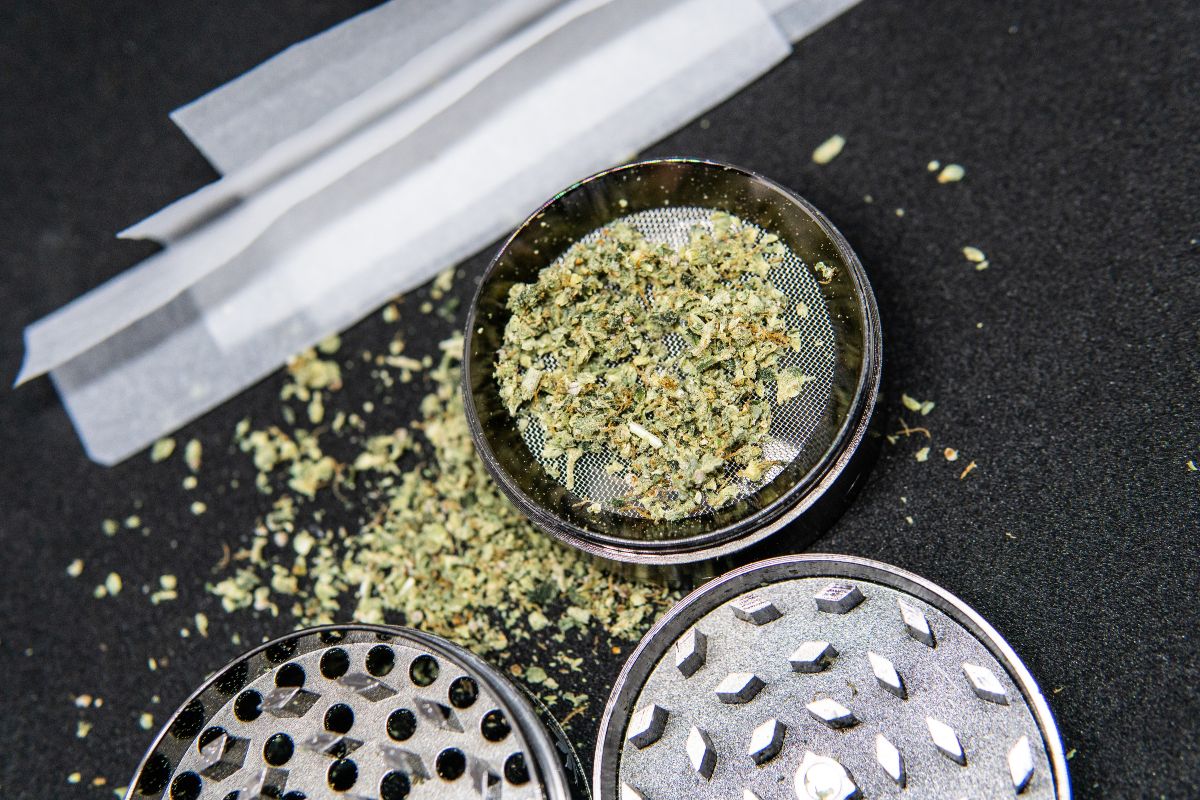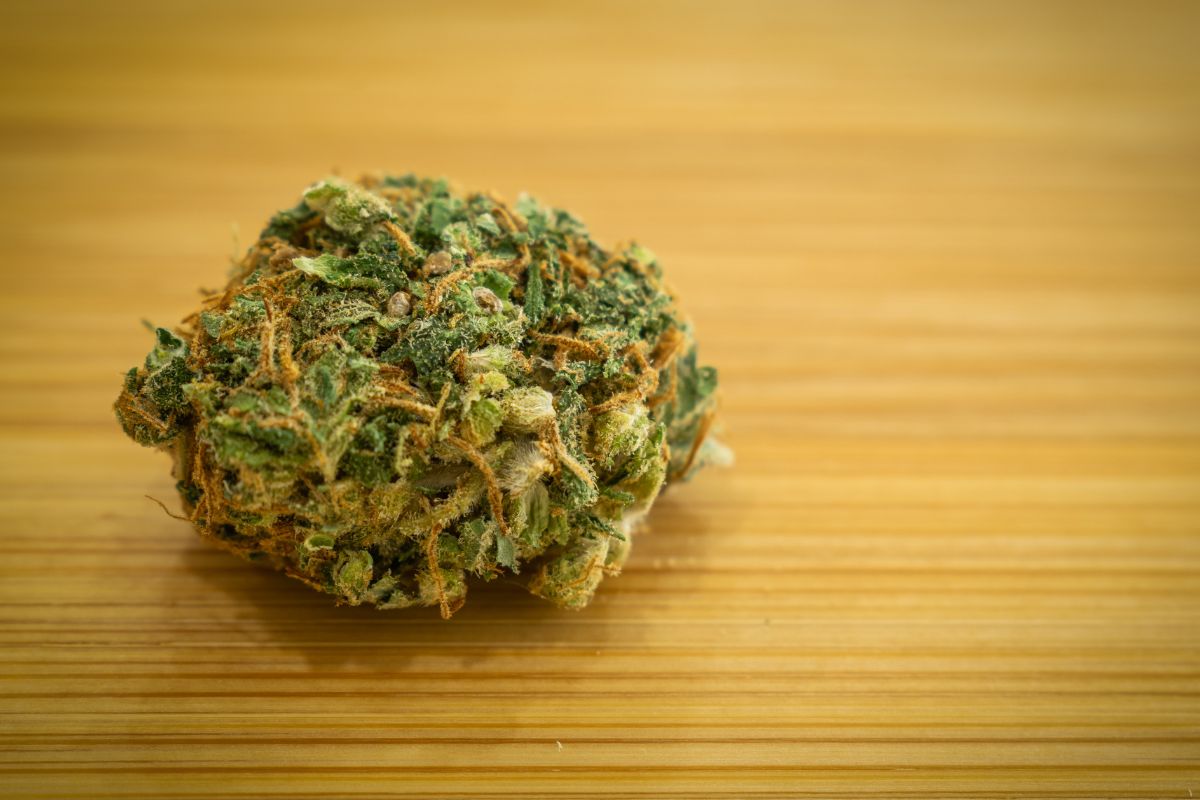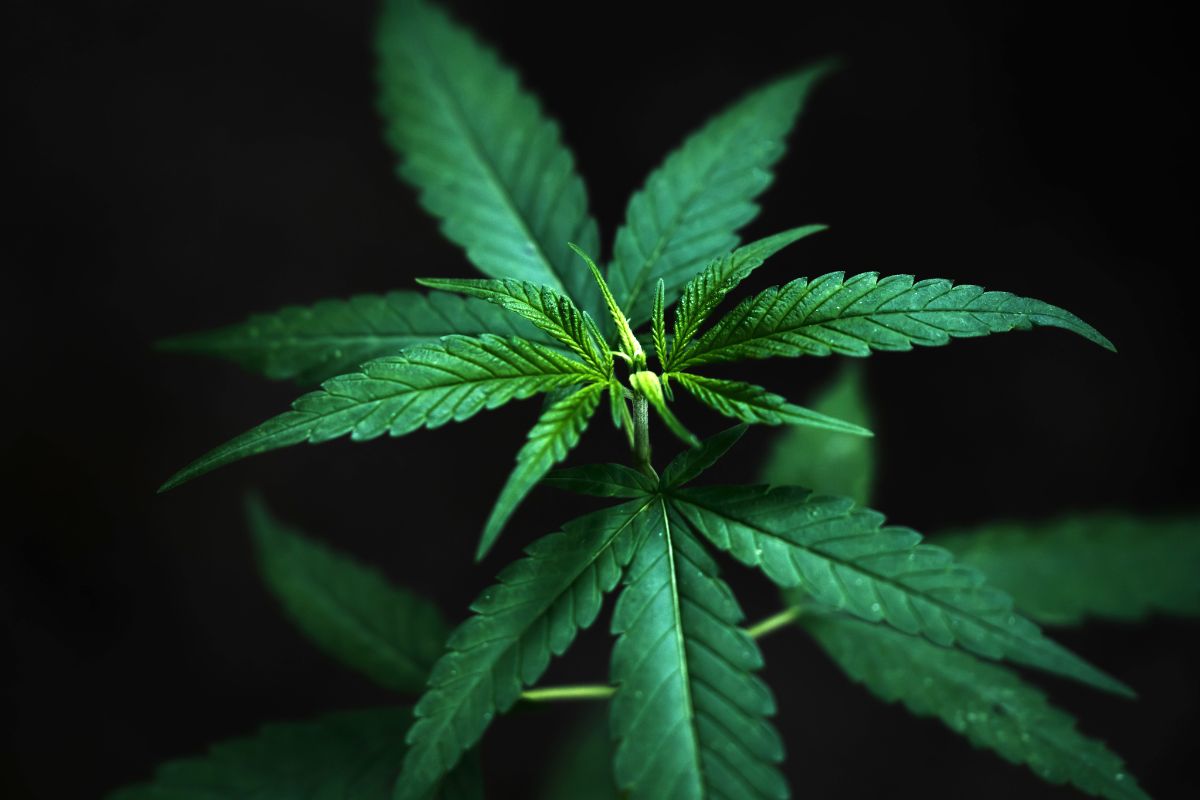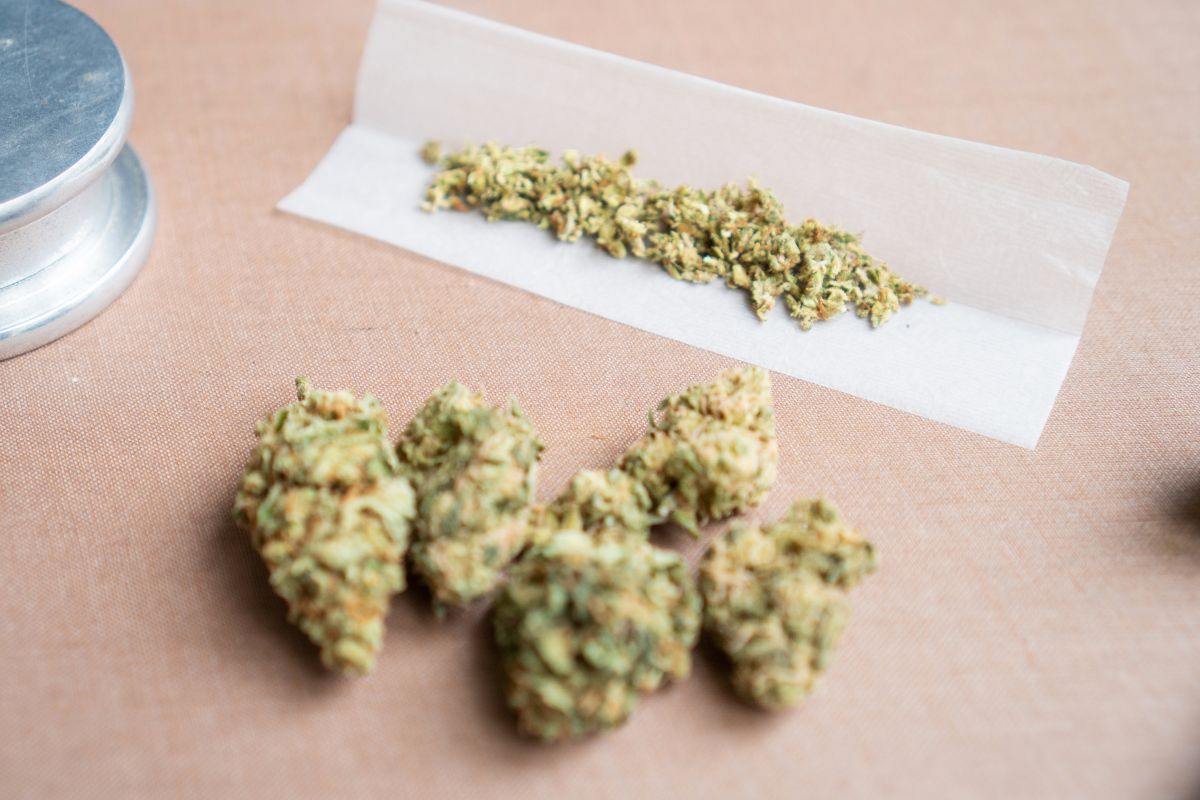You may have heard that weed can be good for dealing with inflammation. And it’s true.
But it’s safe to say that some strains are more beneficial than others. Some strains won’t help at all with reducing inflammation, and there is limited evidence to suggest that weed relieves most types of acute or chronic pain.

And some don’t give you much of a high either. So if you take some random strain just because you like the name of it, hoping it will help you with your inflammation and pain, not only could it not help at all, but it will be a complete waste of money, leaving you miserable with pain.
That’s why you should read articles like this one. Here, I’m going to go through 5 of the best strains for inflammation, and give you a handy buying guide that will walk you through everything you need to consider before you place your order.
Then I’m going to top that off with a section where I answer some of your most frequently asked questions on the subject.
And without further ado, let’s get straight into it.
(The following strains aren’t listed in any particular order.)
Cannatonic
Description: This hybrid strain, also known as the CBD Queen, is equally balanced between sativa and indica.
It’s a medium-sized plant, with brownish green popcorn-like buds along with leaves in a bright, neon green.
It’s best known for its high levels of CBD.
Derived From: NYC Diesel and Reina Madre
Indica / sativa: 50 / 50
How much THC: It does have a little THC, but this is rarely above 6%.
How much CBD: According to tests, there can be anywhere between 6 and 17 percent CBD present in the Cannatonic strain, which is quite high.
Terpenes, Taste, & Aroma: The main terpenes present in the Cannatonic strain happen to be the ones most strongly associated with both anti-inflammatory and pain relieving properties, namely caryophyllene, myrcene, linalool, pinene.
These terpenes give the strain a fresh citrus orange aroma, together with a hint of pine.
Also used for: Cannatonic can also be used to treat muscle spasms, depression and anxiety, and loss of appetite.
My experience with it: I’m not sure if I really got a high on this strain, but I did get plenty of pain relief, and it seemed to reduce swelling and redness as well.
Pros:
- Believed to help with both inflammation and the associated pain
- It’s also good for general pain relief, such as for headaches and migraines
- Good for beginners due to the relatively low amount of THC, producing little in the way of a high
Cons:
- Doesn’t always produce a high because of the low THC content
- Often leaves the user with cotton mouth
Girl Scout Cookies
Description: Also known as GSC, this is a hybrid strain with deep purple leaves, blazing orange hairs, and vibrant green buds. It’s a very popular strain due to its high potency.
Derived From: OG Kush with Durban Poison
Indica / sativa: 60% indica / 40% sativa
How much THC: THC content can sometimes be as high as a whopping 28%
How much CBD: CBD and CBN levels come in at a generous 1%
Terpenes, Taste, & Aroma: The main terpenes found in the Girl Scout Cookies strain are linalool, myrcene, pinene, limonene, and caryophyllene, which are the ones most strongly related to reducing both inflammation and pain.
It has an odd yet nice aroma, with hints of cherry, lemon and mint. And it has a sweet but pungent, unmistakable flavor.
Also used for: It’s also used to relieve muscle tension and cramps. And it’s also used for depression and anxiety, and for migraines.
My experience with it: This is one of my favorite strains, to be honest. It gives me a powerful relaxing high that starts in the head and spreads before gradually taking over my whole body.
It’s certainly very sedative, but doesn’t put you to sleep. It makes me quite sociable and chatty. I also felt that it helped with my inflammation and with my pain as well.
Pros:
- It’s really potent due to the high levels of THC
- Also features substantial CBD, which also helps with pain and inflammation
- The terpenes also add to the anti-inflammatory and pain relieving effects
Cons:
- Not suitable for beginners due to the high potency and psychoactive effect
Harlequin
Description: This strain is usually covered in sticky white trichomes, with tight, dense, medium size buds, leaves in a medium green, and pistils that can vary between orange and bright red.
Derived From: Columbian Gold, Swiss and Thai sativa
Indica / sativa: 25% indica / 75% sativa
How much THC: Between 4% and 10%
How much CBD: Between 6% and 15%. It has won awards for its high CBD content. The ratio of CBD to THC is 5:2.
Terpenes, Taste, & Aroma: The terpene profile of the Harlequin strain features mainly myrcene, pinene, and caryophyllene, which have been linked to reducing both inflammation and pain
The Harlequin strain is musky and earthy, but it has sweet undertones of tropical and citrus fruit.
Also used for: Treating nausea and anxiety
My experience with it: I like this strain – it definitely helped a lot with my pain and inflammation, and it didn’t bother me that I didn’t get much of a high, because I was just looking for pain relief.
Pros:
- Great pain relieving properties
- Excellent immunosuppressive properties for reducing inflammation
- It’s a good choice of strain for beginners due to the relatively low THC content
Cons:
- Doesn’t produce as much of a high due to the relatively low THC content
Charlotte’s Web
Description: This balanced hybrid strain, also known as Hippie’s Disappointment, was specifically produced for its phenomenal CBD to THC ratio.
It has long, tapered buds and olive green leaves, a typical sativa appearance. There are relatively few pistils and stickiness due to the negligible level of THC-laden trichomes.
Derived From: The strains that this strain is derived from still remain unknown.
Indica / sativa: 50% indica / 50% sativa
How much THC: less than 0.3%
How much CBD: Between 15 and 20%, a whopping 300 times higher than your average strain.
Terpenes, Taste, & Aroma: The main terpenes to be found in the Charlotte’s Web include caryophyllene, which is known to help with both pain and inflammation, along with bisabolol and humulene.
It has an earthy, woody pine aroma, together with hints of sour citrus lemon.
Also used for: Treating seizures, muscle spasms, and anxiety
My experience with it: I was really impressed with just how much this strain helped with both my inflammation and pain, it made me feel much better. It took about 20 minutes to work, though.
But I can certainly see why it’s nicknamed Hippie’s Disappointment – I got no high from this strain whatsoever.
Pros:
- It’s really great for pain relief due to its staggering CBD levels
- It features the terpene caryophyllene, which is known to help with both pain and inflammation
- You don’t have to worry about getting high – it won’t happen
Cons:
- You won’t get a high from it because it’s so low in THC, the psychoactive component
ACDC
Description: ACDC marijuana is a bushy plant that grows up to 4 feet tall and has thin, feathery leaves. The nugs are about the size of my thumb, and the leaves can turn a little purple.
Like the Cannatonic strain reviewed earlier, it’s rich in CBD but relatively low in THC.
Derived From: Ruderalis and Cannatonic
Indica / sativa: Evenly balanced hybrid at 50 percent Sativa and 50 percent Indica
How much THC: It ranges between 1 and 6 percent – not enough for a psychoactive effect or high

How much CBD: This sits at about 20%, which is considerably higher than the average level which is just 0.05 percent.
Terpenes, Taste, & Aroma: The terpene profile of the Harlequin strain features mainly myrcene, pinene, and caryophyllene, which have been linked to reducing both inflammation and pain.
It has an interesting mix of both pine and skunky aromas, together with floral scents and strong hints of lemon and cherry.
Also used for: Alleviating epilepsy, multiple sclerosis, anxiety, and also the negative effects of chemotherapy.
My experience with it: I found that this strain was great for treating both my inflammation and the associated pain. I didn’t get a high from it, but I didn’t mind that. That’s not what I was using it for.
Pros:
- It’s a choice of medical marijuana that tends to be trusted by the medical profession
- Has plenty of CBD and terpenes known to help with treating the symptoms of both inflammation and pain
- It’s great for newbies who might be nervous at the idea of getting high, since it’s so low in THC
Cons:
- The effects don’t last
- You are unlikely to get much of a high from it
- You can get side effects, such as headaches, if you have a low tolerance
Buying Guide
As promised, here’s your buying guide. Let me walk you through everything you need to think about before choosing which strain to get to treat your inflammation and the accompanying pain.
How Does Cannabis Help With Inflammation?
The THC found in cannabis reduces inflammation in the body by reducing the levels of cytokines, which are the immune signaling proteins of the immune system.
It does this by triggering a process called apoptosis, which is the natural process of the death of these cells.
When the activity of these cytokines is reduced, there are fewer white blood cells being produced, which means that the immune response is slowed down. This is known as immunosuppression.
It has also been suggested that CBD compounds found in cannabis can also bring about anti-inflammatory effects, albeit indirectly.
Clinical studies have shown that CBD also reduces the levels of cytokines in the body, as well as having other impacts on elements of the immune system functioning besides.
When you have both THC and CBD working together, a stronger effect is expected.
How Does Cannabis Provide Pain Relief?
With inflammation often comes pain, sometimes considerable pain that’s so bad it’s hard to concentrate on anything else.
And for that reason, it’s only right that in discussing the best strains for reducing inflammation, we also address the best strains for providing pain relief.
The cannabinoids found in cannabis are believed to block peripheral nerve pain at the source, and that they can also help with pain relief through other mechanisms in the brain.
It’s important to note at this point that while cannabis has been shown to help with mild and moderate pain, unfortunately, it does not appear to be effective in treating chronic pain.
But, a word of caution, there have been some studies that show that cannabis can on occasion make user’s pain feel worse.
Which Is More Important, Higher THC Or Higher CBD?
I guess the answer to this depends on how much pain you find yourself in. If you are in a lot of pain, it’s worth taking plenty of THC if you can handle the high.
But if you just want to reduce inflammation that isn’t causing any real pain, then a high level of THC isn’t necessary.
THC seems to have a greater effect on the way the mind perceives pain, whereas CBD appears to ease pain at its source.
However, if you wish to reduce inflammation without getting high, or having a psychoactive reaction, then lower THC would be necessary.
How Much THC And CBD Do You Need To Have For It To Help?
I would recommend starting with a relatively low dose of CBD for your inflammation to begin with.
And if you don’t feel sufficient benefit from it, you may consider gradually increasing your dosage up to a dose which feels more effective and is also considered a safe dose.
However, you will need at least 15 mg of THC a day for effective pain relief.
Do Higher Levels Of THC And CBD Lead To More Effective Help?
If you find that low doses of cannabis aren’t doing enough to help, you could try gradually increasing your daily dose.
However, you need to remember that weed is not the only remedy for inflammation and pain, and you may benefit from discussing your health issues with a medical professional (Also check out Does Weed Make You Live Longer?).
And be sure to only take safe doses.
Which Terpenes Help With Inflammation And Pain?
Besides CBD and THC, cannabis also contains compounds known as terpenes, which are responsible for the aroma and taste of the weed. But that’s not all.
There is also evidence to suggest that some terpenes can also have anti-inflammatory and analgesic properties.
The best terpenes for reducing inflammation are limonene, myrcene, and caryophyllene.
The best terpenes for providing pain relief are caryophyllene, myrcene, linalool, pinene and limonene.
Side Notes
- You don’t need to rely solely on weed to help with your inflammation and pain. Depending on where your inflammation is, you can be prescribed medications for it, or treat it with a cold compress or bag of ice. Similarly, pain relief can also be prescribed to you if you are in a lot of pain, and a wide variety of pain relief medication is available without medication.
- If your inflammation is severe, and you are in a lot of pain, it’s well worth speaking to a medical professional and listening to their advice.
- You should also consider whether cannabis is legal in your particular state, or whether taking cannabis will adversely affect any other conditions you may have, or interact with any other medications you may already be taking, rendering them less effective.
- You will also want to consider how you will grow or otherwise get hold of your chosen strain, and factor in the cost of doing so.
Answers To Your Most Frequently Asked Questions
What Is The Best Strain For Inflammation And Pain?
To be honest, it’s kinda hard to pick out the absolute best strain for inflammation and pain because different people experience different results.
All of the strains reviewed in this article are good for treating inflammation, but they can differ in how effective they are at providing pain relief.
Does Sativa Or Indica Help With Inflammation?
Strains that are Sativa dominant have been scientifically shown to have anti-inflammatory properties. They also have antioxidant, and neuroprotective properties as well.
They are also considered worthy of researching their effectiveness in the reduction and reversing of inflammation and comorbidities associated with obesity.
It has also been scientifically proven that indica dominant strains have potent anti-inflammatory properties and is now used in traditional medicine to treat inflammation related diseases such as arthritis.
And it also has analgesic properties, which help with pain relief.
So, in short, both sativa and indica dominant strains help with inflammation, but indica dominant strains are better for pain relief.
Conclusion
I am pleased to report that if you wish to use cannabis solely for the purpose of reducing inflammation and pain rather than to get high, this is not only doable, but there are several strains out there that can help.
- 5 Best Weed T-Shirts For Women - June 26, 2023
- What Is Stoner Girl Clothing? All You Need To Know - June 26, 2023
- What To Wear To A Cannabis Café: 10 Awesome Options - June 26, 2023










